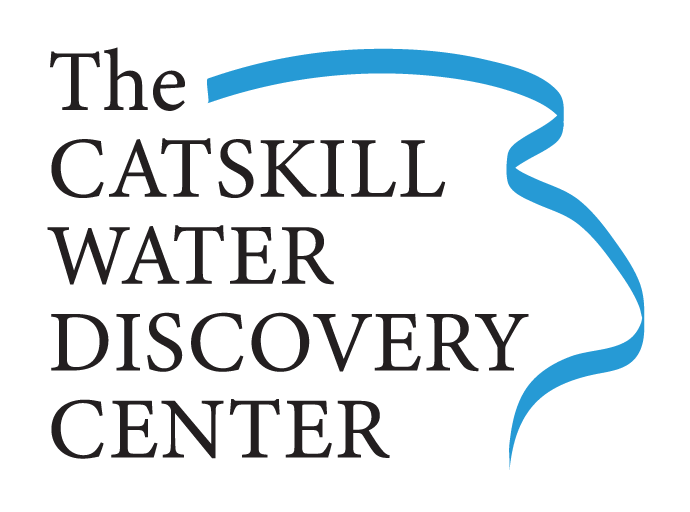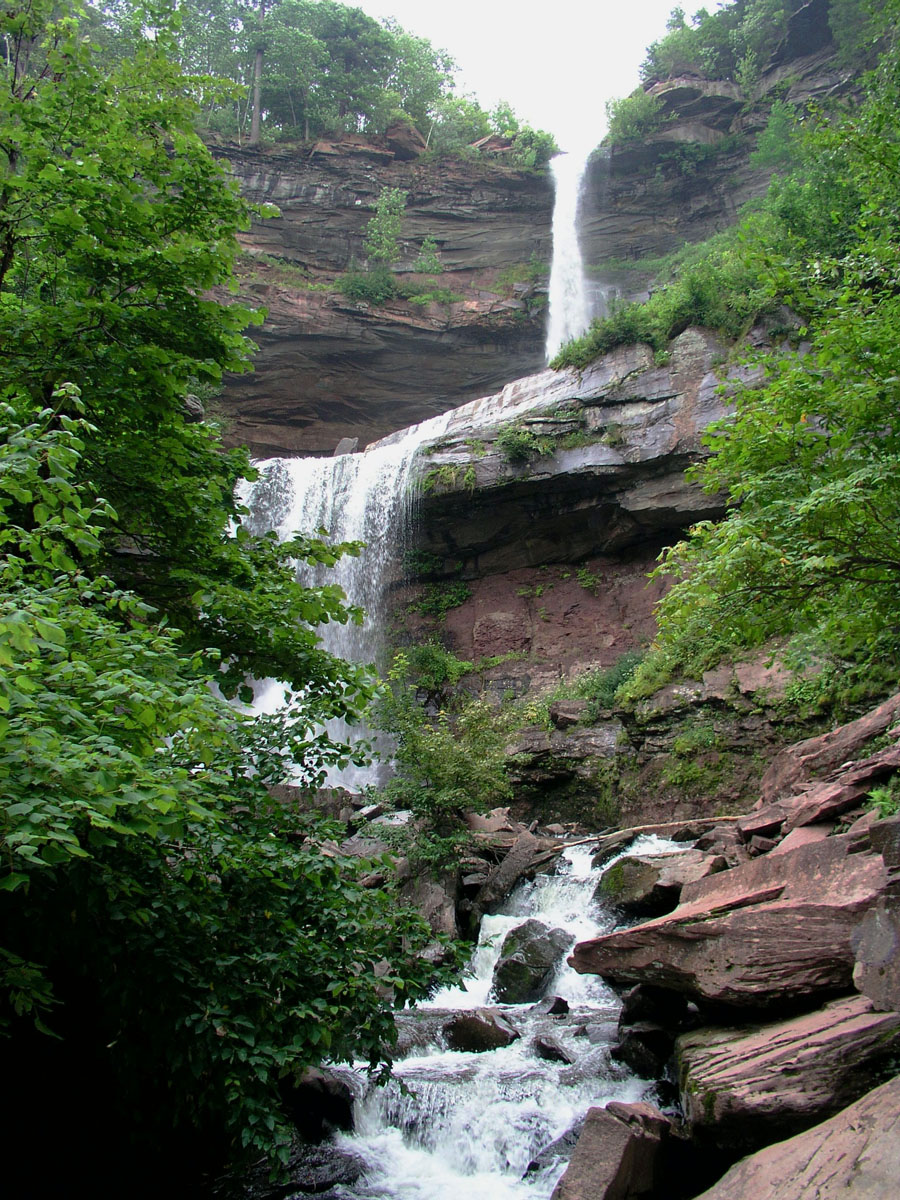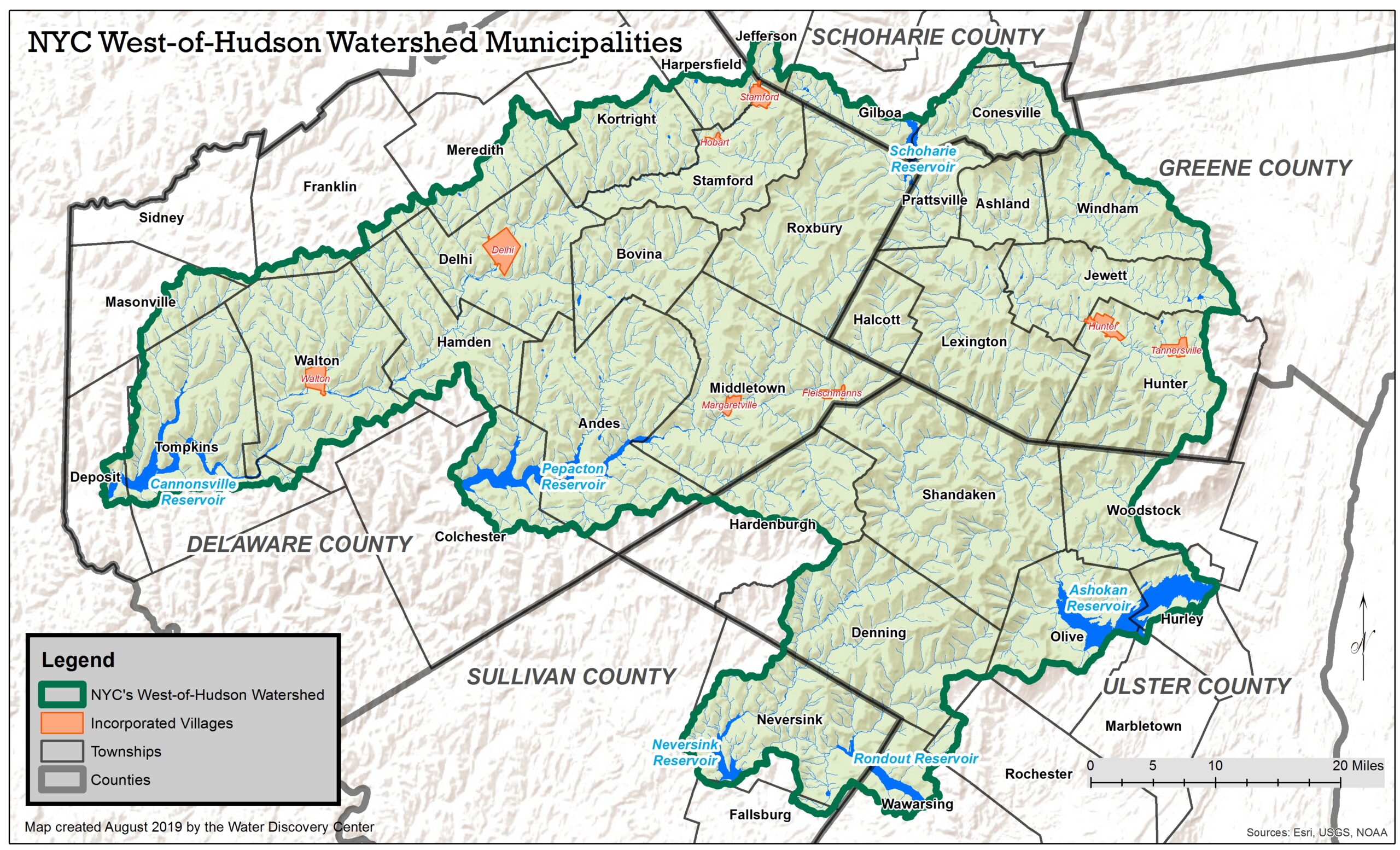Watershed History
Open each topic by clicking the right + button.
Since the Early 1900s...
… when New York City began using the mountain streams and lakes as a water source, the environment of the Catskill Watershed region has been protected. Prior to that, loggers and tanners all but stripped the mountains bare through much of the 1800s, prompting an outcry from naturalists and environmentalists. In 1885, the Catskill Forest Preserve was created to reclaim and protect this important ecological resource.
Today, about 40 percent of the lands in the Catskills are publicly owned “forest preserve.” The mountains are an indispensable watershed, providing drinking water for local people as well as millions of others in the lower Hudson Valley.
A Pristine Setting...
The Catskill Watershed Region is an area of 1,600 square miles that includes all or parts of five counties, dozens of towns, villages, and hamlets. A collection of 6 man-made reservoirs hold water from mountain rivers and streams until it travels through a century-old gravity-fed system of aqueducts, tunnels and pipes to New York City.
Much of the region overlaps with the Catskill Park, 700,000 acres of land protected since 1904 by the State of New York and frequently visited by New Yorkers in search of outdoor adventure, peace and quiet, and extraordinary natural beauty. Logging and agriculture were once the most important industries in the region and the agricultural heritage is still visible in this pristine rural setting.
Watershed Towns and Villages...
The people who live and work in the communities that fall within the New York City watershed help protect that natural resource. But the economic development and well-being of New York City has not always been shared by NYC’s upstate benefactors. Today, landowners in watershed communities listed below are restricted in what they can do with their property. Many communities were entirely sacrificed to New York’s need for Catskill water. For a history of the New York City Water Supply, including the towns that were lost, see Catskill Watershed Corporation.
TOWNS:
Andes, Ashland, Bovina, Broome, Colchester, Conesville, Delhi, Denning, Deposit, Fallsburg, Franklin, Gilboa, Halcot, Hamden, Hardenburgh, Harpersfield, Hunter, Hurley, Jefferson, Jewett, Kingston, Kortright, Lexington, Liberty, Marbletown, Masonville, Meredith, Middletown, Neversink, Olive, Prattsville, Rochester, Roxbury, Shandaken, Sidney, Stamford, Tompkins, Walton, Wawarsing, Windham, Woodstock.
VILLAGES:
Delhi, Fleischmanns, Hobart, Hunter, Margaretville, Stamford, Tannersville, Walton.
Memorandum of Agreement...
When, in 1989, the US Environmental Protection Agency (EPA) mandated that all surface drinking water supplies be filtered, New York City officials faced a cost of $8 billion to build filtration plants. Their only alternative was to prove to the EPA that their water supply was so well protected that filtration was not necessary. For them, that meant putting new restrictions on those who live and work in the watershed region. But communities and their elected officials united in fighting new restrictions that would further curtail economic development without compensating the region in some way for its economic losses.
After nearly a decade of wrangling, the Coalition of Watershed Towns and New York City signed the historic, New York City Watershed Memorandum of Agreement. The three-volume, 1,500- page document has become what author of Liquid Assets: A History of the New York Water Supply System, Diane Galusha, called a “ground-breaking example of mutually beneficial cooperation between people and agencies sharing a history of conflict and animosity.” See the summary guide to the MOA at cwconline.org.
From Mountain to Metropolis...
Since 1837 work on the gravity-fed water delivery system that supplies New York has been ongoing. Likened by author Diane Galusha to the building of the Panama Canal, the watershed and the delivery system are considered by many to be the eighth wonder of the modern world. Six reservoirs, three primary aqueducts, seven tunnels, and a variety of storage and balancing facilities and distribution points make up the system.
Because the Catskill region has been protected at such high environmental standards, the water is delivered to New York City taps, for all uses including drinking and cooking, in its pure, originating, unfiltered (other than by nature) state. Remarkably, the system is almost entirely gravity-fed with only five percent of the supply being pumped to its destination.
Photo by
Watershed Towns and Villages Map
Photo by


